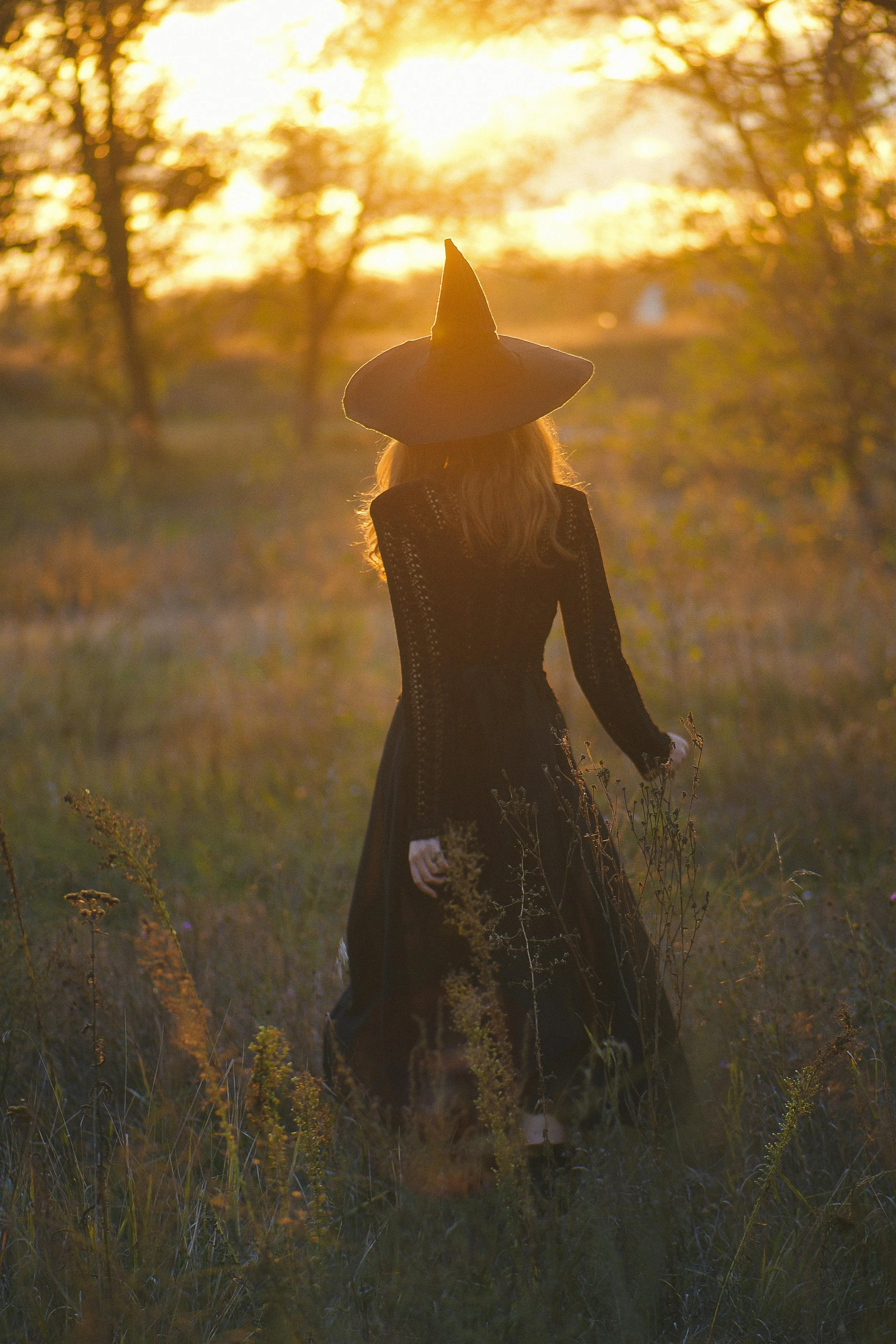Are you a witch?
“Who’s a witch"?” my niece asks me as I talk to my sister, her mum, about the witch hazel bark concoctions I made for the Actaea Institute Diploma Course.
“I’m a witch” - I say creepily in reply and good fun. She smiles.
My nieces know me for all the living and dead crawly bugs, and living and dried plants that wonderfully fill my home. Thus, unfamiliar happenings of this sort come at no surprise.
But my choice of herb for my homework assignment was far from intentional. I picked witch hazel bark only because it was on hand. I am still limited on supplies after a big move. I am trying to finish renovations prior to fully unpacking and thus only have to-go thermal mugs, one pan and one box of pantry items; legumes, Nutella etc. unpacked at the behest of my niece desperately reminding me how empty my house is of nourishment. Once a place full of snacks and fresh food, it’s almost totally bare while we rotate a single Pyrex bowl, one big spoon and miscellaneous odds and ends.
When I double-checked with ChatGPT if I could make all four: 1) a tea, 2) an infusion, 3) a tincture, and 4) a decoction with this herb, I got the greenlight.
I look forward to the day when I can instinctually know better which herbs do well with which preparations.
Down a witchy tangent
The witch in Witch Hazel does not come from witches or witchcraft but rather from the Old English word, “wice” (pronounced witch), which means bendable.
The full Latin name Hamamelis comes from Greek:
hama = “at the same time” and
melis (or melon) = “fruit”
→ referring to the unusual fact that witch hazel bears flowers and ripe fruit simultaneously in autumn — a rare trait.
But despite no etymological relation, when my niece heard the word - it’s the green-hatted broom-riding caldron-coddling vision that came to mind.
And had she asked me 6 months ago “Who’s a witch?” instead of a giddy reply in jest, judgmental imagery and fear she’d see me as a witch would have surfaced.
But over 2025, a very deep sprout began to grow…. and indiscernibly as plants do, nonetheless inching upward over time.
For most of my life I only thought of witches as either 1) old ladies who wasted time on spells to preoccupy their solitude or 2) attention-grabby counter-culture adolescents trying to edge their parents into a mental breakdown as their blond-haired daughter goes full goth and starts wearing heavy pentagram jewelry.
Despite a personally very deep connection to mother earth and the divine universe of energy and holism, I clearly have not withstood some strong indoctrination to forgo such judgements. Until recently I had been incredibly suspicious and unamused by the topic of witches outside enjoying the song “Defying Gravity” and loving a good pointy-nosed costume on Halloween.
But now…
I’ve grown to be more attracted to witchy ways, in a way that I would’ve been ashamed to admit for facing the same judgement I unleashed.
I suppose I can pin-point the beginning of the transition to a 2024 British documentary film, Witches, on the topic of post-partum psychosis. It was through my work within the midwife community for my day job - that I came across the film.
If you can withstand the eerie avant-garde intro, it settles into some powerful insights to maternal care and how criminalized intuitive women and healers have been through their midwifery work and what that postpartum journey can be like.
The field of Midwifery, like Herbalism, really embody core tenants covered in Chapter 2 of our course book, Clinical Herbalism Plant Wisdom from East and West by Rachel Lord. In this part, key takeaway messages were about Wise Women, women as healers and the historical periods in which natural healing and knowledge about our bodies was under siege.
“Wise-Women healers, whose status fluctuated from revered healer to witch” hits deeply both the world of herbalism and midwifery.
An aside: It was also through Maternal Care that I, in fact became more formally introduced to aromatherapy, (you know, outside of it’s adjacent use in my yoga or massage sessions). It was through Denise Tiran’s well-known work in the UK for her use of complementary therapies in pregnancy, labor & delivery that brought aromatherapy into my brain as a true contribution to health, wellbeing, and healing arts.
Lastly, recently listening to the Plant Cunning’s podcast, episode 3 on Natural Magic with John Michael Greer, continues to open this new door, this new perspective, this paradigm shift in my own life journey. And more and more I love my witchy sisters, and my own witchy heritage, and future path.
In no smooth transition… that’s about the end of my thoughts on this witchy tangent.
On to how the experience was working with witch hazel for the assignment. : )
In summary: it was fairly easy, in that I seemed to have executed on the plan. Who knows how this all actually turned out. But if no medicinal use comes from these preparations, at least, I got, as intended, the chance to practice.
Some notes:
The tea was much more drinkable with some honey and much better warm than cold or room temp.
I accidentally cooked off all of the water with my first attempt at the decoction because I started with 24 oz in a wide sauce pan and it all cooked off long before the 30min mark, and I had set a timer while on a work call. I then doubled the starting oz of water.
I used Absolute Citron vodka for my tincture because I don’t have anything else handy, and I wouldn’t mind using it up. This comes with some added considerations (photosensitivity if used topically), but otherwise it seems okay to do so and certainly for this practice run.
Apples & Raisins
My nieces observation was that the left over marc, strained to make our decoction smelled like apples and raisins.
Witch Hazel
Hamamelis virginiana
Botanical name: Hamamelis virginiana L.
Family: Hamamelidaceae
Common names: Witch hazel, snapping hazel, spotted alder, winterbloom
Native range: Eastern North America, from Nova Scotia and Québec down through the Appalachians to Texas and Florida. **Found in moist, shaded woodlands, stream banks, and ravines.
🔮Energetic summary:
Witch hazel gathers what is dispersed and cools what is inflamed — teaching integrity, containment, and quiet strength.
Witch hazel reminds us that strength is not loud; it is in the ability to hold steady, to cool what burns, and to draw the scattered self back into harmony.
Like her winter bloom, she teaches that grace and healing are possible even in the coldest season of life.
Astrological meaning:
Witch hazel carries Saturn’s wisdom of form and discipline blended with Mercury’s adaptability. It draws structure from chaos, returning fluid energy into rightful channels — both physically (blood vessels, lymph) and emotionally (boundaries, composure).
Traditional and Folk Lore:
The Cherokee, Iroquois, and Potawatomi used decoctions of bark and leaves to reduce swelling, treat bruises, sore muscles, and inflamed eyes.
It was considered a cooling “drawing” medicine, used in poultices for infections or abscesses.
Symbolic lore:
The only tree that flowers when the world is asleep.
Represents quiet resilience, inner fire in winter, and the hidden streams of intuition beneath the frozen ground.
In folk magic, it’s used for protection, revelation, and divination of hidden truths.
Early American herbalist Samuel Thomson (1830s):
“Of witch hazel I have often made trial for bruises and inward soreness — it bindeth that which was loosened and giveth tone to the fibers.”








